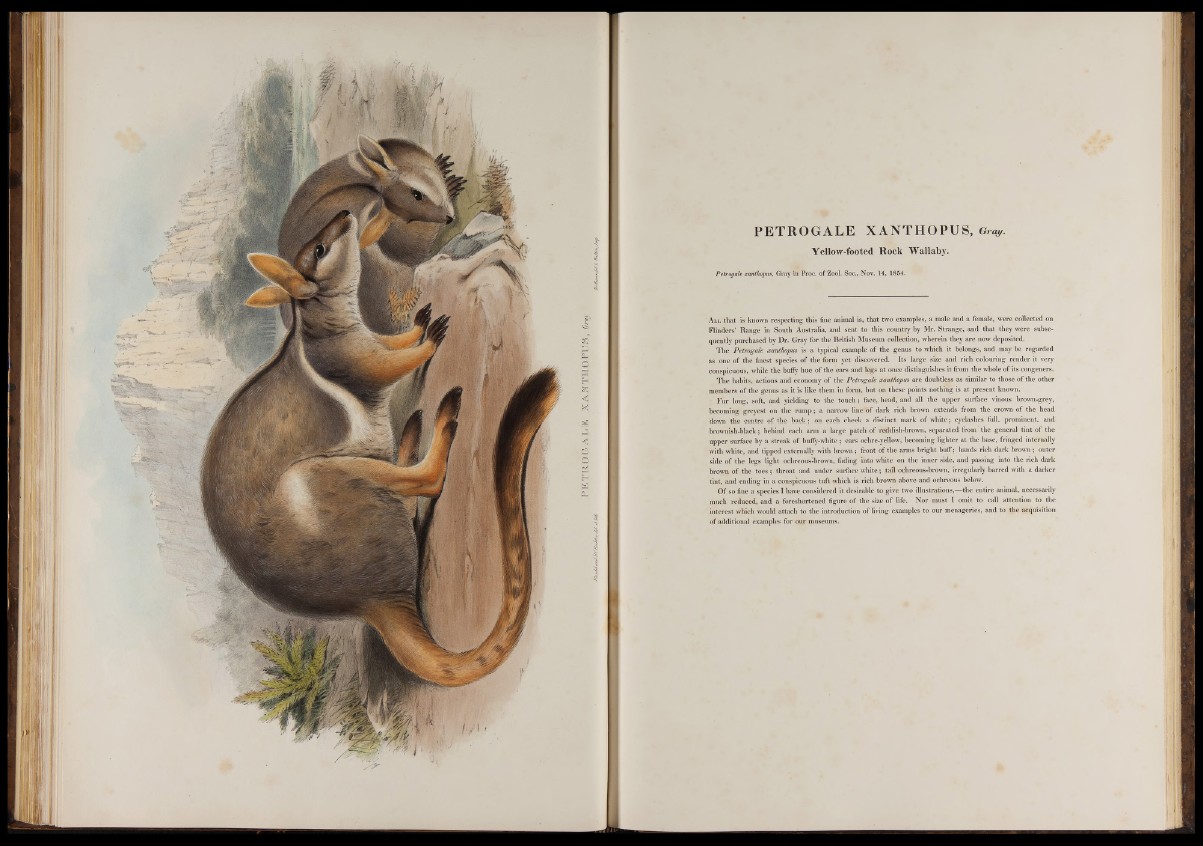
PETROGALE XAMTBjOPITS, 6rV
PETROGALE XANTHOPUS, Gray.
Yellow-footed Rock Wallaby.
Petrogale xanthopus, Gray in Proc. of Zool. Soc., Nov. 14, 1854.
All that is known respecting this fine animal is, that two examples, a male and a female, were collected on
Flinders’ Range in South Australia, and sent to this country by Mr. Strange, and that they were subsequently
purchased by Dr. Gray for the British Museum collection, wherein they are now deposited.
The Petrogale xanthopus is a typical example of the genus to which it belongs, and may be regarded
as one of the finest species of the form yet discovered. Its large size and rich colouring render it very
conspicuous, while the bufly hue of the ears and legs at once distinguishes it from the whole of its congeners.
The habits, actions and economy of the Petrogale xanthopus are doubtless as similar to those of the other
members of the genus as it is like them in form, but on these points nothing is at present known.
Fur long, soft, and yielding to the touch; face, head, and all the upper surface vinous brown-grey,
becoming greyest oil the rump; a narrow line 'of dark rich brown extends from the crown of the head
down the centre of the back; on each cheek a distinct mark of white; eyelashes full, prominent, and
brownish-black; behind each arm a large patch of reddish-brown, separated from the general tint of the
upper surface by a streak of buffy-white ; ears ochre-yellow, becoming lighter at the base, fringed internally
with white, and tipped externally with brown; front of the arms bright huff; hands rich dark brown; outer
side of the legs light ochreous-brown, fading into white on the inner side, and passing into the rich dark
brown of the toes ; throat and under surface white; tail ochreous-brown, irregularly barred with a darker
tint, and ending in a conspicuous tuft which is rich brown above and ochreous below.
Of so fine a species I have considered it desirable to give two illustrations,—the entire animal, necessarily
much reduced, and a foreshortened figure of the size of life. Nor must I omit to call attention to the
interest which would attach to the introduction of living examples to our menageries, and to the acquisition
of additional examples for our museums.